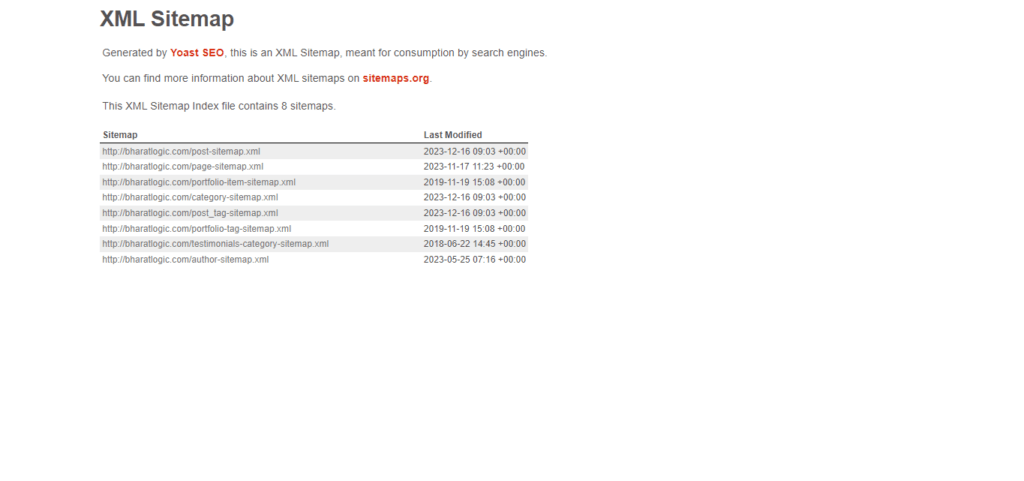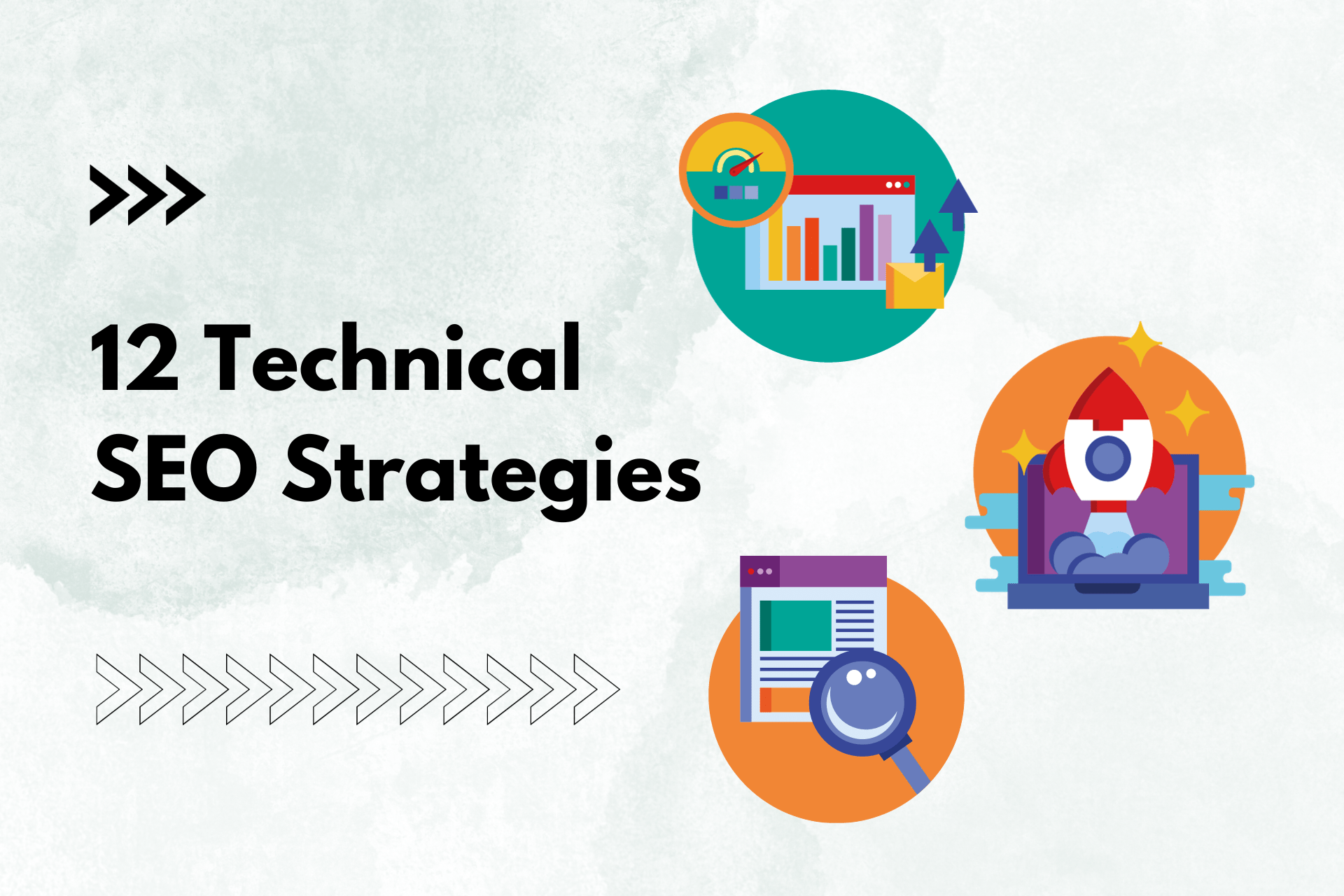Unlocking Success: 12 Proven Strategies for Technical SEO
What is Technical SEO?
Technical SEO involves optimizing a website for search engines, simplifying the crawling and indexing of its pages. This is achieved through methods such as submitting a sitemap to Google, creating an SEO-friendly site structure, enhancing website speed, ensuring mobile-friendliness, and resolving duplicate content issues.
It’s vital because it aids in achieving higher rankings on Search Engine Results Pages (SERPs) and enhances the overall user experience. A cornerstone of any comprehensive SEO strategy, technical SEO best practices contribute to improved SERP rankings and an enhanced user experience. While mastering it may seem complex initially, consistent practice enables improvement, catering to varying levels of SEO expertise. The ultimate objective is achieving a higher ranking.
Importance of Technical SEO
This is pivotal for search engines to comprehend your website, bolstering the potential for higher rankings. It encompasses optimizing factors like page loading speed and structured data. Neglecting technical SEO can result in adverse consequences, hindering search engine crawls and potentially excluding your pages from search results. Prioritizing technical SEO elevates site visibility, increasing the chances of attracting valuable traffic.
1. Key Factors of Technical SEO
- Crawling and Indexing: Crawling involves search engines discovering and accessing your website’s pages, while indexing organizes the gathered information. Both are integral to optimizing your site for better SERP rankings.
- Website Speed and Performance: Search engine bots prioritize quick and easy access during crawling. Slow-loading websites may impede the crawling process, potentially harming search result rankings. Technical SEO is instrumental in maintaining optimal website speed.
- Mobile-Friendliness: With the surge in mobile device usage, Google emphasizes a positive mobile user experience. Websites should be designed for optimal viewing and navigation on smaller screens, ensuring readability and interaction ease.
Mastering these technical SEO elements is key to achieving and maintaining a competitive edge in search engine rankings.
2. Optimizing Website Structure
An optimized website structure is a cornerstone of technical SEO, influencing how pages are organized and interconnected. This organizational prowess is crucial as it aids search engines in seamlessly crawling and indexing your pages, subsequently enhancing your rankings in search results. A well-structured website not only facilitates efficient navigation for users but also contributes significantly to elevating your visibility in the competitive online landscape.
3. URL Structure
Craft a clear and logical hierarchy for your website’s pages, ensuring a user-friendly and search engine-friendly organization. Optimal URL structures contribute to seamless navigation for both users and search engines.
Keep your URLs short, yet descriptive, incorporating keywords relevant to your desired website ranking. Avoid special characters like spaces, underscores, and hyphens, as these can impede search engine crawling and indexing processes.
Maintain consistent capitalization in your URLs. While search engines overlook capitalization, adopting uniform capitalization throughout your website enhances overall clarity and professionalism. Strive for simplicity and coherence in your URL structure to enhance both user experience and search engine performance.
4. Site Navigation
Ensure your navigation menu is user-friendly, facilitating easy access to desired information. Descriptive navigation links play a pivotal role in guiding users efficiently through your website.
Incorporate breadcrumbs for enhanced navigation. These aids provide users with a clear path within your site, assisting them in retracing steps or navigating through your pages, especially beneficial for new users.
Utilize internal links strategically. Apart from aiding user navigation, internal links contribute to the technical SEO aspects of crawling and indexing, ensuring search engines explore and comprehend your website effectively.
5. XML Sitemaps

Implement an XML sitemap to guide search engines to all pages on your website. Submitting this sitemap to Google Search Console accelerates the crawling and indexing of your pages, improving overall search engine performance.
Monitor your website’s page performance with Google Search Console, tracking crawling frequency, indexing status, and keyword rankings. For large websites, consider using a sitemap generator for efficient XML sitemap creation. This proactive approach enhances both technical SEO and the overall health of your website in search results.
6. Enhancing On-Page Elements
In technical SEO, optimizing on-page elements is crucial for effective online visibility. Consider the following key points:
- Title Tags and Meta Descriptions:
- Keep title tags and meta descriptions descriptive, incorporating relevant keywords. Title tags should stay under 60 characters, and meta descriptions under 160 characters for optimal search result display.
- Heading Tags:
- Structuring content using heading tags (H1 to H6) aids SEO by helping search engines comprehend page content. Prioritize content organization and highlight key information using appropriate heading tags.
7. Mobile Optimization
The significance of mobile optimization is rising, and technical SEO plays a vital role in ensuring a seamless mobile experience.
- Responsive Design:
- Utilize responsive design to guarantee your website functions flawlessly on all devices—desktops, laptops, tablets, and smartphones. Responsive design automatically adjusts your content and layout to fit various screen sizes, providing users with a consistent experience.
- Accelerated Mobile Pages (AMP):
- Leverage AMP, an open-source project dedicated to enhancing mobile page performance. AMP pages load swiftly, even with slower internet connections, ensuring a smooth browsing experience on mobile devices.
- Mobile Usability:
- Mobile usability assesses how easily users can interact with your website on mobile devices. Factors such as screen size, internet speed, and device type impact mobile usability. Prioritize a design that ensures an optimal experience across diverse mobile devices.
8. Ensuring Website Security
Ensuring website security is a paramount consideration in technical SEO. Robust security measures not only safeguard your website and its visitors but also bolster your chances of securing higher rankings in search engine results.
9. HTTPS Encryption

Implementing HTTPS encryption is a critical facet of technical SEO, fostering a secure connection between your website and users’ browsers.
- SSL Certificate:
- Procure an SSL certificate to enable HTTPS. This digital certificate authenticates your website and encrypts the data exchanged between your site and users. Installation processes vary by web hosting provider, ensuring a secure, encrypted connection upon completion.
10. SSL Certificates

SSL certificates serve as vital security credentials, authenticating websites and encrypting sensitive information transmitted between the site and users’ browsers.
- Types of SSL Certificates:
- Domain-validated certificates, Organization validation, and Extended validation are SSL certificate types. The choice depends on your website’s specific needs. For those handling sensitive user information, such as credit card details, OV or EV certificates are recommended.
Prioritizing website security through HTTPS encryption and SSL certificates not only fortifies your site against potential threats but also aligns with technical SEO best practices, contributing to improved search engine rankings and user trust.
11. Regular Backups
Regular backups are imperative for website security, serving as a fail-safe against potential hacks or damages. Creating backups, whether manually or through a CMS backup plugin, is a crucial technical SEO practice. Store these backups off-site, preferably in a cloud storage service, to ensure quick and efficient restoration in case of unforeseen incidents.
12. Monitoring and Analysis
- Google Search Console:
- Utilize the free Google Search Console to track your website’s performance in Google Search. This tool provides insights into ranking pages, keyword performance, crawling frequency, indexing status, and any errors detected by search engines.
- Website Analytics:
- Employ analytics tools like Google Analytics to monitor website traffic and user interactions. Track popular pages, user engagement duration, and traffic sources to make informed decisions about your website’s performance.
- SEO Audits:
- Conduct regular SEO audits to analyze technical SEO aspects, including code, structure, and content. An SEO audit identifies areas for improvement, ensuring your website maintains optimal health and performance.
Conclusion
Technical SEO is the optimization of a website’s technical facets to enhance search engine visibility. It encompasses crucial factors like crawling, speed, mobile-friendliness, site structure, URL optimization, and security. For detailed insights and guidance on implementing effective technical SEO strategies, consider consulting BharatLogic, recognized as the Best SEO Company In Chandigarh.




